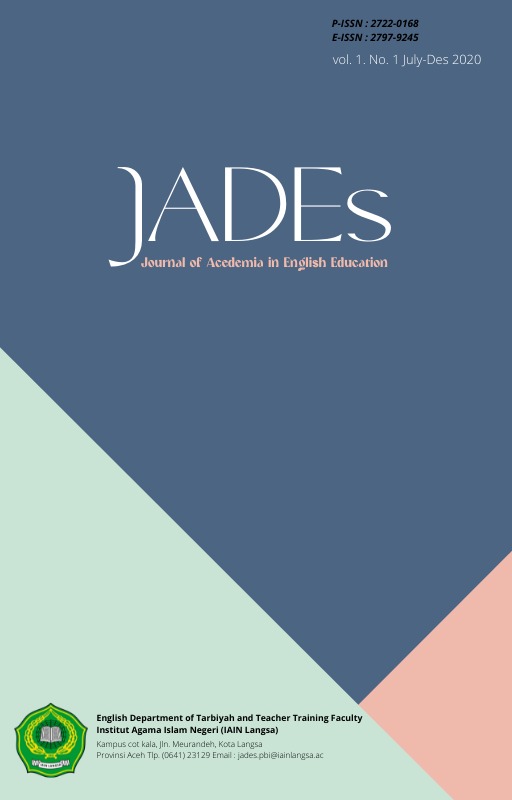Main Article Content
Abstract
The aims of this research were to find out students’ obstacles in determining sense of relation at English Department of IAIN Langsa and also their efforts to solve the problems. The researcher used descriptive qualitative method and the data were collected by using documentation and semi-structured interview. The subject of this research were the 25 students of sixth semester of English Department selected purposively. The results of the study showed that the students had difficulties in determining the sense of relation, especially homonym, homophone and homograph. The students could not identify phonetic symbols of homophone in a text. They did not memorize and did not understand the definition of the three types of homonymy. Students were unable to analyze words because of the similarity, and they could not determine the words in listening. The efforts made by the students to understand the homonym, homophone and homograph include learning and increasing vocabulary through online dictionary, learning from the internet, and social media, learning with friends and asking lecturers about sense of relation particularly homonym, homophone, and homograph.
Keywords
Article Details
References
- Atiko, booklet, 2019. Brosur dan Poster sebagai Karya Inovative di Kelas, Caremedia Communication.
- Charles W. Kreidler, 1998. Introducing English Semantics London: Routledge.
- Cruse, D.A., 2004. Lexical Semantics. Cambridge: Cambridge University Press.
- Donald, A. Drury. 1969. Homograph and Pseudo Homograph, California: Long Beach.
- Durri Andriani, et.al, 2011. Metode Penelitian, Jakarta: Universitas Terbuka.
- Gottlob, L.R., Goldinger, S.D., Stone, G.O., & Van Orden,G.C. 1999. Reading homographs: Orographic, phonologic, and semantic dynamics. Journal of ExperimentalPsychology: Human Perception and Performance.
- Kreidler, Charles W, 1998 Introducing English Semantics. London: Routledge.
- Matthew B. Miles and A. Michael Huberman, 1994. Qualitative Data Analysis Second Edition, London: Sage Publications.
- Mohd Imran Khan, 2016. The Investigation and Importance of Sense-Relations and Semantics in the Engli sh Language.
- Moleong, Lexy J. 2007. Metodologi Penelitian Kualitatif, Bandung: Rosdakarya.
- Ogden, C.R., Richards, I.A. 1923. The Meaning of Meaning, London: Routledge and Kegan paul.
- Richards, J.C. & R. Schmidt. 2002. Longman Dictionary of Language Teaching and Applied Linguistics.3nd edn. London: Pearson Education Limited.
- Suharsimi Arikunto, 2009. Manajemen Penelitian, Jakarta: Rineka Cipta.
- Suharsimi Arikunto, 2002. Prosedur Penelitian Kualitatif Pendekatan Suatu Praktek, Jakarta: Rineka Cipta.
- Sugiyono, 2010. Metode Penelitian Pendidikan Pendekatan Kuantitatif, Kualitatif, dan R&D Bandung: Alfabeta.

